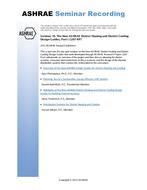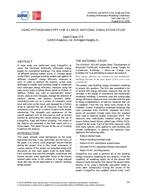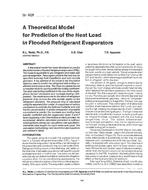The Solar Heat Exchanger Window Wall* (Assembly) relies on the "greenhouse effect" of glass for the collection of solar energy in the winter mode. Short wave solar energy passes through the clear insulating glass that is exposed to the exterior and strikes the pane of heat-absorbing reflective glass (collector). Heat absorbed by the collector is drawn off by convection or forced air currents of a furnace fan or a IIVAC air handling unit into the return air ducts. Space between the insulating glass and the collector is provided for the return air to pass over the collector, where it is heated before being redistributed throughout the building through conventional ducts and registers. Approximately fifty percent of the total energy passing through the Assembly enters the building as direct solar gain. The rest of the energy is converted into useful gain (hot air) that can be transported to areas of the building that require heat.
In the summer mode when it is desirable to reject solar energy, the pivotal sash is rotated 180 degrees to position the heat absorbing reflective glass with the reflective surface to the exterior. A large percent of the solar energy (35 to 65 percent, depending on glass used) is reflected from the reflective surface of the glass before it can reach the interior of the building. Of the remaining solar energy passing into and through the heat absorbing glass a large percent is absorbed. Convective and outside air currents moving through the space between the collector and the insulating glass, which is now vented to the outside atmosphere, dissipate the absorbed solar energy into the outside air. Theoretic analysis and experimental tests have confirmed that 65 percent of the solar and thermal gain can be rejected in the summer mode by the Assembly.
For commercial applications of the Assembly there are many standard pivotal windows manufactured that can be easily modified to accept one additional pane of heat absorbing reflective glass that makes the collection or rejection of solar energy possible. The additional pane of glass is mounted in a hinged frame for access to all glass surfaces for cleaning purposes.
Residential applications may utilize the commercial pivotal windows; however, wooden sash and frames may prove to be more economical and appropriate.
Existing designs and construction methods can easily incorporate the use of the Assembly by . simply providing large unobstructed areas on southern walls for mounting.
Many existing tract houses can be retrofitted with the Assembly over entire walls that have a southern exposure, without major modification to the structure
Citation: Symposium, ASHRAE Transactions, Volume 85, Part 1, Philadelphia, PA
Product Details
- Published:
- 1979
- Number of Pages:
- 6
- File Size:
- 1 file , 230 KB
- Product Code(s):
- D-PH-79-04-3


